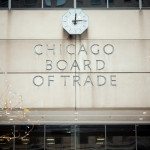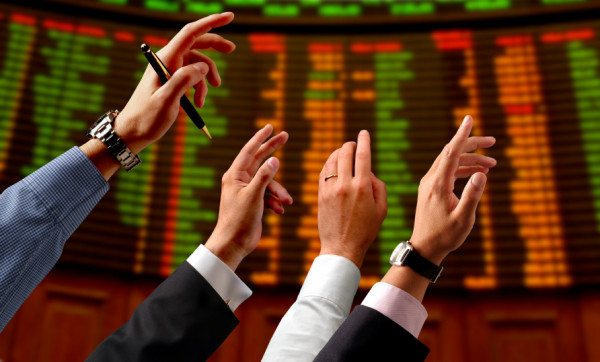 Investors who like maximum leverage and lots of action rely upon technical rather than fundamental analysis and are willing to accept regular short-term losses to make a single out-sized gain. Such investors often consider commodity futures trading. Knowledgable investors can make a lot of money in commodity futures. At the same time, they can also lose a lot of money very quickly. If you have the stomach for wide swings between euphoria and misery, the financial capital to withstand temporary market setbacks, the diligence to keep abreast of the factors that affect prices, and the knowledge to react appropriately as events occur, commodity trading in futures may be worth considering.
Investors who like maximum leverage and lots of action rely upon technical rather than fundamental analysis and are willing to accept regular short-term losses to make a single out-sized gain. Such investors often consider commodity futures trading. Knowledgable investors can make a lot of money in commodity futures. At the same time, they can also lose a lot of money very quickly. If you have the stomach for wide swings between euphoria and misery, the financial capital to withstand temporary market setbacks, the diligence to keep abreast of the factors that affect prices, and the knowledge to react appropriately as events occur, commodity trading in futures may be worth considering.
Making Money with Commodity Futures Contracts
The essence of commodity futures trading is correctly predicting the price of a specific commodity at specified future point in time:
For example, the last trade on the Chicago Board of Trade (CBOT) June 15, 2013 for a contract of wheat to be delivered on September 13, 2013 was for a price of $6.89 per bushel. Believing that the harvest yield will be less than expected due to bad weather and the price of wheat will be higher on that date due to weather damage, I buy a contract to take delivery of a contract of wheat on September 13 at the $6.89 price. Over the next several months, prices per bushel will move up and down, reflecting the combined opinions of speculators and industry insiders about the final price at which wheat will sell on September 13. Sometime between today and September 13, I will buy a contract to make delivery of the wheat that will be theoretically delivered to me on the same date. My profit is the difference between the price at which I will make delivery, say $8.40 a bushel, and the $6.89 price at which I agreed to take delivery or 1.51¢ per bushel.
Conversely, if I believed that the price of wheat per bushel will be less than $6.89 bushel on September 13, I would buy a contract to make delivery on that date at the $6.89 price. Since I don’t have the wheat to deliver, I will, at some point between today and then, buy a contract to take delivery at a price less per bushel than $6.89. As before, my profit will be the difference between the price at which I make delivery ($6.89 per bushel) and the price at which I take delivery (say $5.40 per bushel). In this case, my profit would be $1.49 per bushel ($6.89 – $5.40).
Total profits (or losses) are based upon the number of bushels which are bought and sold. In the examples above, a single wheat contract is specified at 5000 bushels. In the first example where prices moved up, my total profit was $7550 ($1.51 per bushel x 5000 bushels); in the second example, my total profit was $7450 ($1.49 per bushel x 5000 bushels). Of course, I could be completely wrong about my price expectations. If, in the first example, the price had fallen to $5.40 after I purchased my contract to take delivery from $6.89, my loss would be $1.49 per bushel or $7450. In the second example, if prices had risen from the $6.89 I had received to make delivery to $8.40, the price I was required to pay to take delivery, my loss would be $7550.
Commodity futures trading is all about timing. If your purchase a contract to take delivery initially, prices must rise for you to make money; if your initial purchase was a contract to make delivery, prices must fall for you to make money.

Commodity Futures Contract Trading
A commodity futures contract differs significantly from a stock or bond, although both are traded on regulated exchanges or boards. These differences include
All Transactions Occur on a Regulated Exchange
The trading of futures contracts occur on the floor of a Commodity Futures Exchange, the oldest being the Chicago Board of Trade. Commodity brokers, each representing a single party wishing to buy or sell a specific commodity, match those who want to make delivery with those who want to take delivery of the commodity in a chaotic, open auction process. The Exchange guarantees the future performance of each contract holder so that identification of those will make delivery versus those who will take delivery is not essential to either party.
A Limited Investment Period
Stocks or bonds, once purchased, can be held for indefinite periods of time, even generations. Even a short sale can be maintained indefinitely provided the seller complies with rules and regulations governing such transactions. In contrast, a Futures Contract has a fixed expiration date on which all obligations of the contract must be fulfilled. Those traders who own contracts to make delivery must deliver the physical commodity on that date or face legal and financial consequences for failure to do so, just as those who have outstanding contracts to take delivery must accept the commodity when presented. As a consequence, the holding period for a commodity futures contract is usually much shorter than for a stock or bond.
Standardization of Futures Contracts
Virtually all aspects of futures contracts have been standardized to facilitate trading. For example, grain commodities are traded in units of a specified number of bushels with an official size bushel, the relationship between different grades of grain delineated, and a fixed delivery date and place for the exchange between the physical commodity and cash to occur. The details of each commodity, whether a metal, an agricultural or energy product, or a currency, is similarly defined to minimize confusion and encourage trading.
Commodity exchanges also establish price increments, called “ticks”, the minimum dollar amount that the price moves up or down. For example, a bushel of wheat is priced in increments of ¼ of one cent (.25¢). Each tick would mean a price change in the contract of $12.50 (5000 bushels x $.0025). In order to maintain price stability and avoid “Panic” runs, some exchanges establish price daily limits for the commodities which are traded on their exchange. Once a limit is reached – up or down – trading is halted until the next day.
Fulfilling A Futures Contract Obligation
A commodity futures contract does not represent ownership of the physical commodity, but a legal obligation to buy or sell the physical commodity in the future. As a consequence, the obligation can be extinguished by
Delivering or taking delivery of the physical commodity.
Settling a futures obligation in this manner is extremely rare (less than 2% of contracts by most estimates) and is, in fact, limited to a small group of regulated entities which have the facilities to ship or accept large quantities of the commodity on settlement dates. An investor who has an open contract obligation should not worry about desperately trying amass the commodity for delivery or that railroad cars of the commodity will be delivered to his front door. In actuality, the exchange will insure that the obligation is met, charging the investor’s account all of the costs of fulfilling the obligation.
Making a Cash Settlement.
Some commodities do not require nor expect physical delivery of the underlying commodity, either because the product itself cannot be stored for long periods of time due to spoilage or other logistics (Lean Hogs and Feeder Cattle) or delivery is impractical such as with Stock Indexes like the S&P 500 or the Nasdaq 100. These futures obligations are settled by paying/receiving the loss/gain related to the contract in cash on the date the contract expires.
Executing a contra-transaction of the futures contract.
The vast majority of commodity futures contract positions are liquidated by entering into an equivalent, but opposite futures contract. For example, a contract requiring the holder to make delivery of 5000 bushels of wheat on September 13 in Chicago would be offset or negated by purchasing a contract to take delivery of 5000 bushels of wheat on the same date at the same place and, vice versa.
Leverage in Futures Contracts
The commodity exchanges establish minimum financial conditions by which futures contracts are purchased as well as rules to ensure participants will complete the terms of a commodity future contract:
Initial Margin requirement
Initial margin is the amount of money that is required to buy or sell a futures contract (take a position). It is a percentage of the total contract value and it is set by the Exchange based upon the particular risk or price volatility that a commodity might experience during the contract period. The margin is required whether the investor will be making or taking delivery of the commodity in the future. To illustrate, using wheat, a contract covers 5000 bushels. If wheat were selling at $6.89 per bushel as in the example above, the contract has a value of $34,450. Rather than placing the entire amount in an account, the buyer (or seller) of a futures contract is required to deposit an initial margin of 15% into the brokerage account or approximately $5200, with the remaining amount due when the futures position is closed
Margin maintenance
Margin maintenance is the amount of money a futures contract holder must maintain on account to ensure they can perform as the commodity price moves up or down. It is usually 70%-80% of the Initial Future Margin Requirement. If, for example, you took a futures position as in our wheat example which required $5200 initial margin, you might be required to maintain a minimum of $3900 equity in the account. If the price of the commodity dropped during your holding period and caused a $500 decline in the value of your contract, you would be required to deposit an additional $300 into your account in order to meet the $800 margin maintenance requirement. If the value of your position rises (you will make delivery and the price of the commodity rises or you will take delivery and the price falls), you can withdraw funds from your account. If the value of your position declines (you will make delivery and the price of the commodity falls or you will take delivery and the price rises), you will be required to replace or add funds to your commodity futures account.
Margin Calls
Margin calls are the process by which you are noticed that a margin deficiency exists and includes a notice to deposit more funds into the account to re-establish the legal margin maintenance amount. Unlike stocks which have a 5 day settlement period, commodity margin calls must be met within a 24 hour period. Failure to meet a margin call means that the futures positions subject to the margin call will be closed. A margin call, once issued, must be met even if the market has recovered, negating the previous loss.
Minimum initial and maintenance margin requirements can be changed at any time by the Exchange. Member trading firms of each Exchange (the broker through which you place your commodity futures orders) can establish their own higher requirements as well as more stringent procedures to deal with margin calls.
Since commodities trade in standard and mini-contracts representing large amounts of the underlying commodity and require deposits significantly less than the value of the total contract, out-sized profits are possible. A contract of wheat, for example, covers 5,000 bushels (136 metric tons) while a mini-contract is 1,000 bushels. If wheat were selling at $6.00 per bushel, the total contract value would be $30,000. As of January 8, 2013, the initial futures margin requirement for a contract of wheat was $3,125 or about 10.5 percent of the contract’s total value. In other words, you could control 15,000 bushels of wheat for less than $10,000. Minimum margin requirements for each commodity are established by the Exchange on which it is traded.
As a consequence, each 1¢ change in price is worth $50 per contract. If an investor purchased the future contract at $6.00 per bushel and sold it at $6.50 per bushel one month later, the total profit would be $2500 (5000 bushels times $.50 per bushel). The return on capital, however, would be an astonishing annual return of more than 1000%, assuming the investor repeated the process every 30 days. Unfortunately, prices move down also. If the investor had to sell the contract at $5.50, sustaining a 50¢ loss per bushel, his investment of $3,125 would be worth $625, an 80 percent loss in the period. In this case, rather than buying the futures contract, the investor should have sold it.
Commodity futures trading is popular because of the potential large gains, the probability of losses often overlooked. Commodity futures prices are highly volatile. A bushel of wheat, for example, might move 50¢ up or down in a single day, to be followed by an opposite move of the same magnitude the next day. Futures traders are often “whipped-sawed” in such markets, making profits one day only to lose them and more the next day. Astute traders look for shot-term trends, cutting losses short when prices move against them while letting profits run. As a consequence, the majority of trades will be losses, offset occasionally large (ideally) profits. Of course, there are no guarantees when or if the profits will ever materialize.

Diversity of Commodities Available
Futures contracts are available in all types of commodities including;
- Currencies including the US Dollar, the British Pound, the Japanese Yen, the Euro, and the Mexican Peso.
- Energy ranging from two types of crude oil to gasoline and ethanol.
- Financials with T-Bonds, T-Notes, Swaps and Federal Funds.
- Grains – winter wheat, spring wheat, corn, soybeans, oats and rice
- Indices including the S&P 500, the Nasdaq 100, the DJIA, and the Russell 2000.
- Meats with Cattle, Hogs and Milk.
- Metals – Gold, silver, Copper, Platinum and Palladium.
- Softs ranging from frozen orange juice to lumber.
Final Word
Commodity exchanges have been called “really supercharged betting parlors with hyperactive markets.”¹ They are clearly not for everyone. In fact, most investment advisers recommend against investing in commodity futures for anyone who is unsophisticated, has limited funds or is risk-adverse. If you elect to pursue an investment in commodity futures or commodity futures options, limit your exposure to no more than 5%-10% of your portfolio or restrict your investment to purchasing calls or puts on specific commodities until you’re thoroughly familiar and comfortable with the nuances of the commodity markets.
What do you think? Are you investing in commodity futures now? What is your experience?
¹ Schoen, John w. “Should I invest in commodities?”. NBCNews.com Answer Desk. Downloaded March 28, 2013 by M. Lewis.

